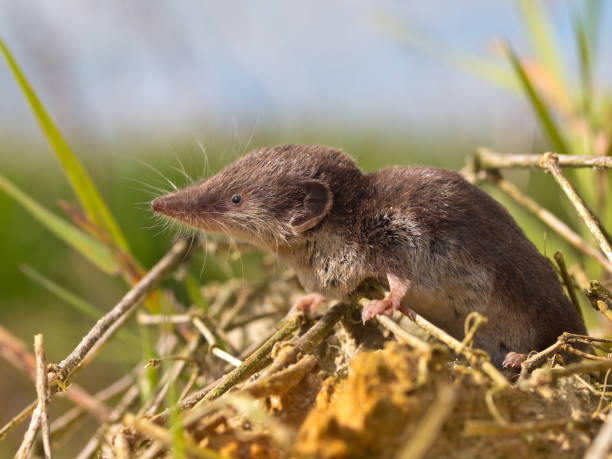Table of Contents
Scientific Classification
| Kingdom | Animalia |
| Phylum | Chordata |
| Class | Mammalia |
| Order | Eulipotyphla |
| Family | Soricidae |
| Genus | Myosorex |
| Species | Myosorex varius |
| Scientific Name | Myosorex varius |
Description
The Forest Shrew (Myosorex varius) may not be the most glamorous creature out there, but it certainly has its own charm. This tiny insect-eater measures around 5 to 10 centimeters in length and sports a short tail. Weighing in at just 10 to 20 grams, it’s easy to miss — yet its story of survival is nothing short of an evolutionary wonder.
With its soft, velvety fur in shades of brown, grey, or black, it seamlessly blends into the forest underbrush. Its long, pointed muzzle is perfectly designed for probing into crevices in search of tasty invertebrates. Those small eyes hint at its preference for shadowy environments. Belonging to the Soricidae family, the Forest Shrew relies on its keen sense of smell and hearing to navigate its world.
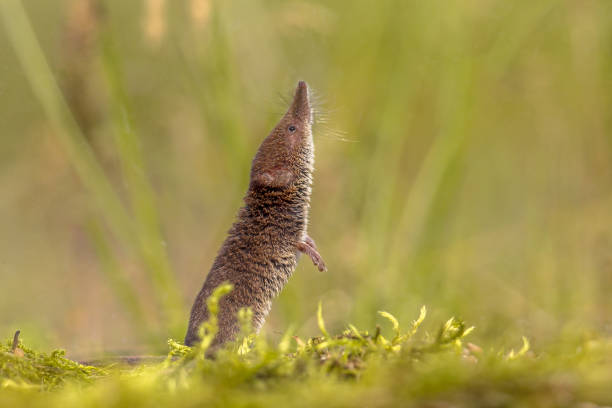
Distribution
The Forest Shrew primarily calls Southern Africa its home. You can spot it in places like South Africa, Lesotho, and Eswatini (formerly known as Swaziland). It’s also been spotted in certain regions of Zimbabwe and Mozambique.
These little shrews tend to thrive in areas with plenty of rainfall. They have a preference for forests or damp spots where the leaf litter and undergrowth offer both shelter and a rich food supply. While they might seem to have a limited range, they actually flourish across various elevations and climates, showcasing their impressive adaptability.
Habitat
The Forest Shrew, as its name implies, loves to hang out in thick, lush forests, but it doesn’t limit itself to just that habitat. You can also spot it in:
– Montane and submontane forests
– Moist grasslands
– Riparian thickets
– Fynbos, which is a unique type of vegetation found in South Africa
– Scrublands and areas of degraded bushland
Typically, its microhabitat features leaf litter, fallen logs, or rocky crevices. These cozy spots are perfect for foraging for food and dodging predators. Since these little creatures have small bodies, they thrive in moist environments to prevent losing moisture too quickly.
Diet
Forest shrews are fascinating little creatures that primarily feast on insects, playing a vital role in keeping invertebrate populations in check. Their menu mainly includes:
– Insects like beetles, ants, and caterpillars
– Spiders
– Worms
– Larvae
– Snails
– And occasionally, a bit of fungi and seeds
With their speedy metabolism, these shrews need to munch on food almost non-stop. In fact, they have to eat about 80-90% of their body weight every single day just to stay alive! They usually search for food close to the ground, using their sensitive snouts to rummage through the leaf litter.
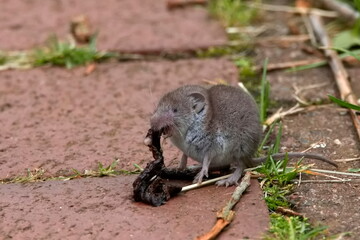
Behavior
Forest shrews are fascinating little creatures that prefer to live alone and fiercely guard their territory. Their daily routine is all about foraging for food, staying out of sight from predators, and keeping their home turf secure. They have a unique way of marking their territory using scent glands, which helps keep unwanted visitors at bay.
Here are some key traits that define their behavior:
– They tend to be nocturnal or active during the twilight hours, but you might catch a glimpse of them hiding in shaded spots during the day.
– They have a knack for burrowing, often creating simple nests tucked away under logs or rocks.
– Their high-strung nature means they can be quite skittish, reacting quickly to any perceived threats.
Because they’re so elusive, you rarely see them, but they play a crucial role in the ecosystem by controlling pests and serving as prey for other animals.
Lifespan
In the wild, Forest Shrews have a pretty short lifespan, usually living just 1 to 2 years. Their time is cut short by things like predators, diseases, and tough weather conditions. But don’t worry—thanks to their quick breeding, their populations stay stable.
When kept in captivity and given proper care, they can live a little longer—up to 3 years, though that’s not very common.
Reproduction and Lifecycle
The Forest Shrew has a pretty interesting mating system known as polygyny, where one male gets to mate with multiple females.
Lifecycle Highlights:
Gestation Period: It lasts about 27 to 30 days.
Litter Size: Usually, there are 2 to 5 little ones, but this can change depending on how much food is around.
Weaning: The young ones are weaned after about 2 to 3 weeks.
Sexual Maturity: They hit this milestone at around 6 to 8 weeks old.
When they’re born, the little shrews are blind, hairless, and completely reliant on their mother. She keeps them warm and fed in a cozy burrow or hidden nest. Once they’re weaned, the young shrews don’t stick around for long; they quickly set off to carve out their own territories.
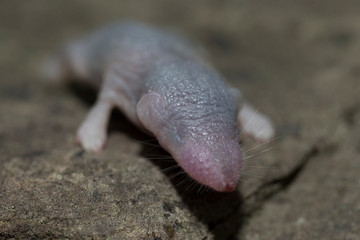
Predators
Because they’re quite small, Forest Shrews find themselves on the menu for a range of predators, such as:
– Owls and other birds of prey
– Snakes, including puff adders and boomslangs
– Small carnivorous mammals like mongooses and genets
– Domestic cats
– Occasionally, large spiders, especially when they’re still juveniles
To stay safe from these threats, they use a few clever tactics:
– Camouflage to blend in with their surroundings
– Quick, darting movements to escape
– Hiding in burrows or crevices for cover
Interestingly, some shrews can emit musky odors. While these smells might deter some predators, they’re not always effective.
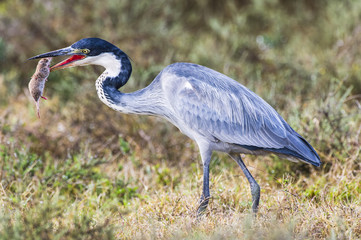
Adaptations
The Forest Shrew has many adaptations that help it live in different habitats:
1. High Metabolism
- Supports intense foraging and energetic lifestyle.
- Enables quick reactions, aiding in predator evasion.
2. Specialized Dentition
- Sharp, pointed teeth ideal for crushing exoskeletons and soft-bodied invertebrates.
3. Keen Sensory Organs
- Poor vision is compensated by acute smell and hearing.
- Sensitive whiskers (vibrissae) help detect movements in the dark.
4. Cryptic Coloration
- Their earth-toned fur helps them blend into the forest floor.
5. Burrowing Behavior
- Simple nests or tunnels provide safety and shelter.
These adaptations collectively help the shrew survive in ecosystems filled with dangers.
Mating Season
In southern Africa, mating usually peaks in the wet season. This is from September to March when food is abundant. However, in regions with stable climates, reproduction may occur year-round.
During mating season:
- Males expand territories and become more active.
- Scent marking and vocalizations may increase to attract mates.
- Brief, intense courtship rituals are followed by copulation.
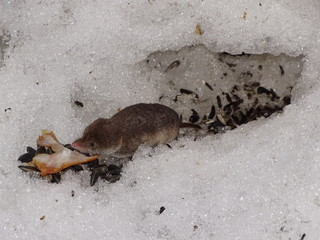
Breeding
Breeding is a critical period in the Forest Shrew’s life. Females choose nesting sites with care. They show strong dedication to their young and rarely leave them alone.
Key Breeding Details:
- Nesting Sites: Under rocks, logs, or burrows lined with leaves and grass.
- Parental Care: Provided solely by the female.
- Rapid Maturation: Offspring develop quickly to reduce vulnerability.
Quick breeding and short gestation help populations bounce back fast after declines.
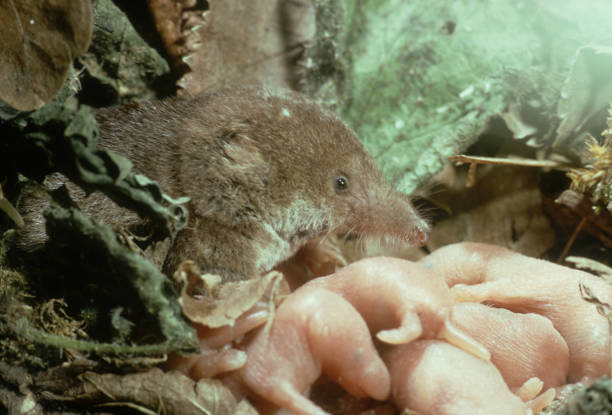
Interesting Facts
- Did you know that shrews aren’t actually rodents? They might look similar, but they belong to a whole different group called Eulipotyphla.
- One of the most common small mammals you’ll find in South African forests is the Forest Shrew.
- While some shrews have venomous saliva, Forest Shrews are not among them. This venomous trait is found in other species, like the Eurasian water shrew.
- Interestingly, Forest Shrews don’t hibernate, even when the temperatures change with the seasons.
- When they’re young, these little creatures show a behavior called “caravanning,” where they hold onto each other’s tails to stay close to their mom.
- Their constant gnawing plays a vital role in keeping insect populations in check, which is great for the health of the forest.
- Though they may be small, they’re quite fierce when it comes to defending their territory. They’ll often chase off intruders or confront them with vocalizations.
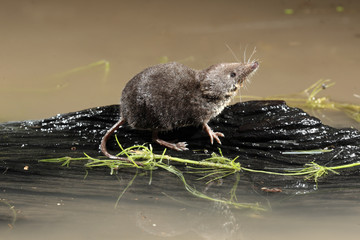
Conservation Status
The International Union for Conservation of Nature (IUCN) has classified the Forest Shrew as Least Concern. This classification is based on a few key factors:
– They have a wide distribution.
– Their population trends are stable.
– They can adapt to degraded habitats.
That said, some local populations do face vulnerabilities due to:
– Habitat loss caused by agriculture, urban development, and deforestation.
– Pesticide use, which diminishes insect populations and contaminates the food chain.
– Climate change, which disrupts rainfall patterns and alters habitat structures.
While they aren’t currently endangered, it’s important that we continue to monitor their status. Protecting their habitats is crucial for their future.
Conclusion
The Forest Shrew (Myosorex varius) may be small and not often seen, but it plays a significant role in our ecosystem. Acting as both predator and prey, it helps maintain food webs and boosts biodiversity. Its quiet existence beneath the forest canopy is a testament to the wonders of adaptation and survival.
In a rapidly changing world, the Forest Shrew reminds us that even the tiniest creatures deserve our care and respect. It embodies the subtle strength of nature, rustling through the underbrush and nurturing its young in a snug, leaf-lined burrow.


